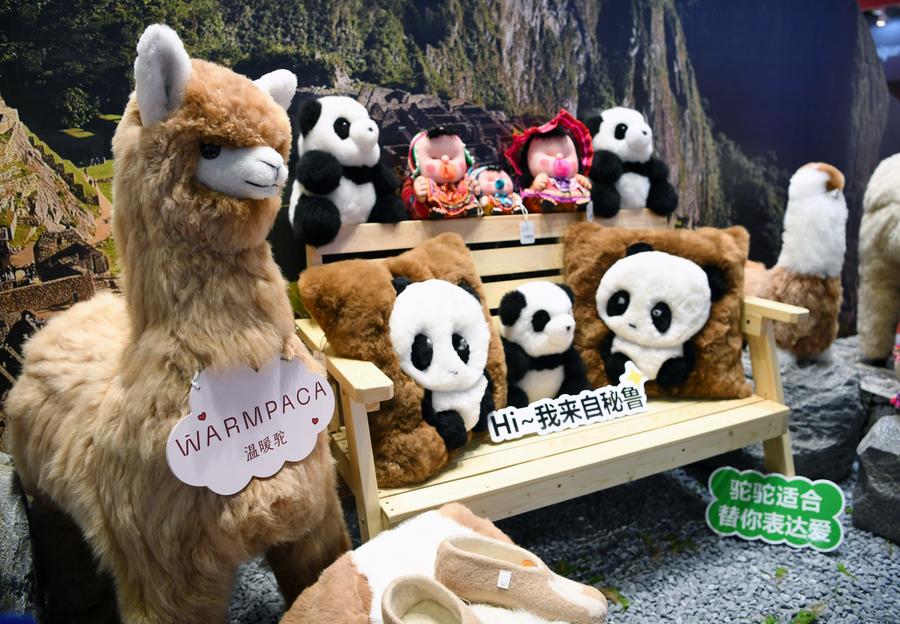Under the theme – “Empower. Include. Grow.” – leaders from Asia-Pacific Economic Cooperation (APEC)’s 21 member economies, which account for about two-thirds of world GDP and half of global trade, will gather in Peru’s capital, Lima, to tackle challenges including climate change, sustainable energy solutions, digital economy transition, and trade facilitation.
Chinese President Xi Jinping is in Lima for the 31st APEC Economic Leaders’ Meeting and paying a state visit to Peru. Peru is one of the first Latin American countries to establish diplomatic relations with China, and the two countries have been expanding cooperation in areas such as mining, energy, manufacturing and agriculture.
China and Peru released a joint statement on Thursday, saying that the two countries welcomed the signing of a protocol on upgrading the bilateral free trade agreement, and are willing to incorporate projects in emerging areas such as circular economy, sustainable agriculture, industrial and supply chains, digital economy investment and green development into bilateral cooperation. The two sides also renewed their advocacy for strengthening multilateral cooperation and jointly tackling global challenges.
This year’s APEC Economic Leaders’ Meeting focuses on three priority areas: Trade and investment for inclusive and interconnected growth, innovation and digitalization to promote the transition to a formal global economy, and sustainable growth for resilient development.
As a key proponent of a free, open, fair, non-discriminatory, inclusive and transparent trade and investment environment and as one of the leaders in innovation, digitalization and renewable energy, China can play a role in the APEC to achieve these ambitious goals.
There is a great similarity between Chinese and Peruvian approaches. While Peru seeks to liberalize trade, strengthen connectivity, narrow gaps through digital transformation, innovation and financial inclusion, and work collectively to foster sustainable development – President Xi has consistently urged APEC member economies to advance trade liberalization and facilitation, actively promote innovation, accelerate digital transformation, bridge the digital divide, and stay committed to inclusive and green development as part of his initiative to build an Asia-Pacific community with a shared future.
Chinese-backed Chancay Port has been inaugurated virtually by Xi and Peruvian President Dina Boluarte. It is set to become a major shipping hub for South America-Asia trade.
Reckoned as one of the Belt and Road largest successes in the region, the mega port will boost Peru’s economy and enhance its competitiveness by allowing producers to export across the Pacific Ocean, increasing tax revenues, creating more jobs, reducing costs and time by up to 30 percent, and shoring up inter-regional integration. Peruvian exporters and analysts see it as a “window into Asia” and a trans-Pacific logistic node.
Trade and investment lie at the heart of the APEC agenda. For a long time, Beijing has played a key role in advancing the economic forum’s trade and investment objectives.

The booth of Warmpaca, a Peruvian brand, is pictured during the seventh China International Import Expo in east China’s Shanghai, November 5, 2024. /Xinhua
China’s role in the success and economic transformation of the APEC remains vital, given its trade volume in 2023 with fellow members had reached $3.5 trillion (almost three-fifths of the country’s total trade). Nine of Beijing’s top 10 trading partners were from the APEC, with China being the largest trading partner of 13 member economies.
Beijing and the bloc are also each other’s major sources of foreign investment, suggesting both are entwined in a close trade and investment relationship. This economic interdependence among APEC members could translate into prosperity for the people of the region through greater integration and innovative, sustainable, and inclusive growth.
The APEC economies, especially those from Southeast Asia, could not only learn from China’s remarkable poverty reduction story but also draw lessons from its unprecedented digital economic transformation. For instance, China’s growth in the number of internet users, soaring per the World Bank from 8.8 million to about one billion, with per capita income rising from $873 to over $12,000, and its e-commerce growth from less than 1 percent to 52 percent between 1999 and 2022. The fast pace of digital development offers insights for the partners to accelerate their digitalization.
Several Southeast Asian states are also part of APEC. As green and digital economies feature prominently in version 3.0 of the China-ASEAN free trade agreement, cooperation between the two sides will help build an inclusive and interoperable digital ecosystem, as well as promote sustainable development in the region, in addition to achieving a higher level of openness and further reducing tariff and non-tariff trade barriers.
China is facing certain economic headwinds; however, it has still posted a robust growth rate of 5 percent in the first half of 2024, thanks to increased consumer spending, exports and investment in manufacturing and public infrastructure. This shows that the country is capable of overwhelming challenges and strengthening its position as a leading contributor to world economic growth.
Xi’s attendance at the Lima meeting vindicates that China is economically resilient and ready to support the forum’s goals, cementing its role in the organization as an important contributor to trade and investment, inclusive and shared growth, as well as innovation-driven green development.

